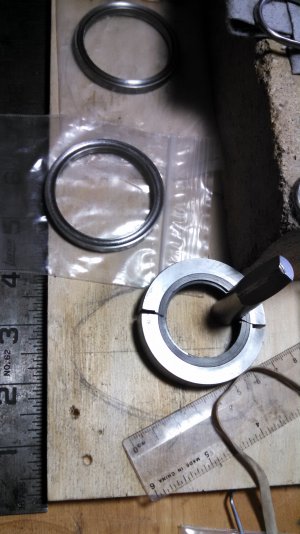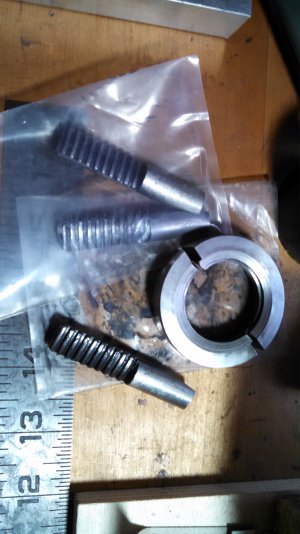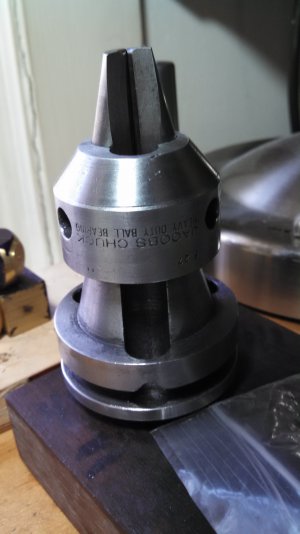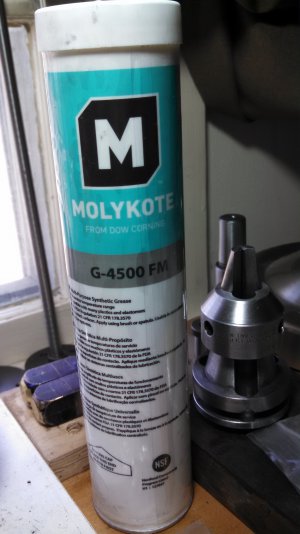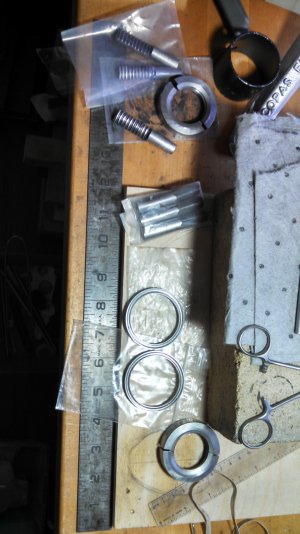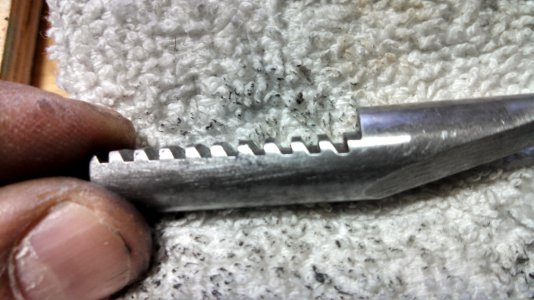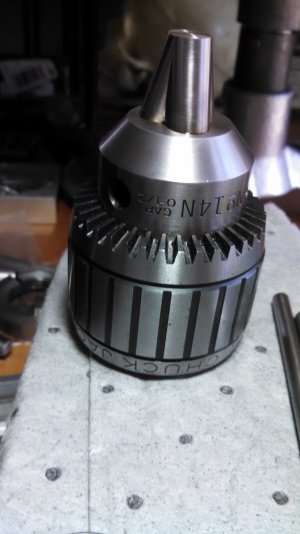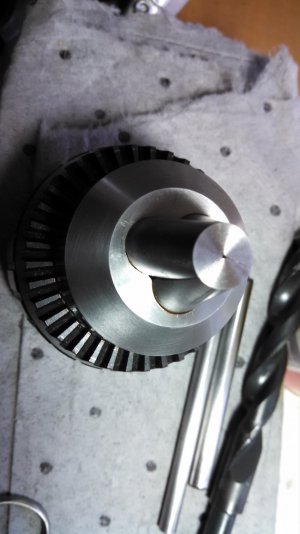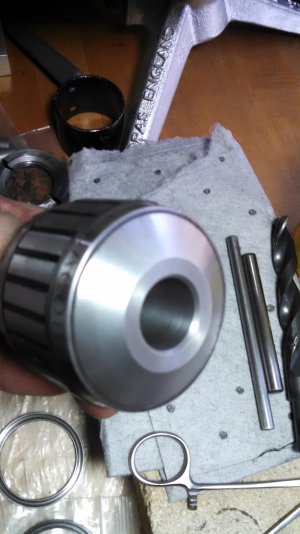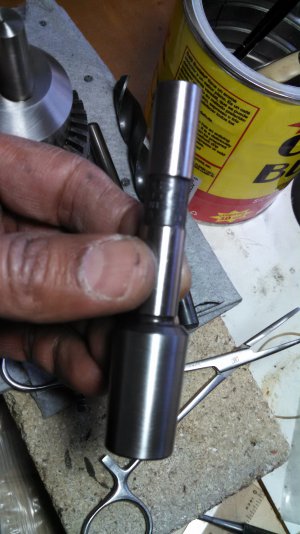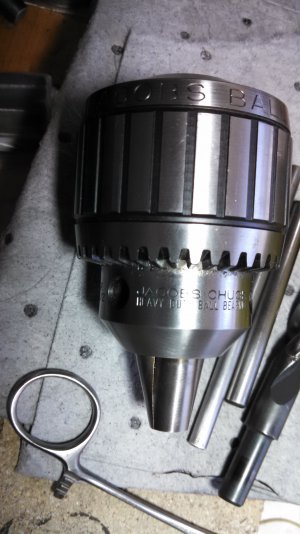- Joined
- Jul 20, 2014
- Messages
- 1,386
After trying to repair 4 Jacobs USA 14n drill chucks, I learned what to do and what not to do.
Here is my experience and some observations;
Jacobs drill chucks when purchased used are like the proverbial "Box of chocolates", you never know what
you will get until you disassemble them. Jacobs had made some design changes along the way.
1. Do not rush this process. Quite a few things can and will go wrong.
2. Use a small arbor press to press on and off. I made the mistake of going with this machinists' advice to
to use a 20 t arbor press. BIG mistake.
3. Although you can identify jaws/hole number placement, it's easier to keep track before removing each jaw. Mark or photograph them to return them to their proper hole locations.
I ruined a decent 14n USA this way. Pressing the sleeve back on. The 20t press exerts way too much force and you can't feel if something is wrong. The Jacobs body is just too soft, not hardened, which I don't understand why it wasn't part of the manufacturing process. If the body/jaw holes are moved by "bending/warping" the metal in the slightest, say good bye to that chuck. Hence, use small arbor press with proper metal rings to hold chuck for pressing on/off.
Keeping the sleeve/chuck body aligned is very important. I've seen where machinists warm up the sleeve before pressing it back on. One person suggests using a light bulb. No direct flame.
DarkZeros' write up on this forum, lays out the best way to go about this process.
Do not doing any grinding or metal removal unless there is high spot. Use Bluing to find any
high spots in the chucks taper.
Cleaning: DarkZero used Purple Power with good results. Other cleaners of this type may dull or tarnish
the metal. I would not soak the parts, spray and scrub with a brass brush. Certain cleaners may have an adverse affect on the metal. I'm not a metallurgist, but these are my observations.
I will add a part II to this with some photos.
Here is my experience and some observations;
Jacobs drill chucks when purchased used are like the proverbial "Box of chocolates", you never know what
you will get until you disassemble them. Jacobs had made some design changes along the way.
1. Do not rush this process. Quite a few things can and will go wrong.
2. Use a small arbor press to press on and off. I made the mistake of going with this machinists' advice to
to use a 20 t arbor press. BIG mistake.
3. Although you can identify jaws/hole number placement, it's easier to keep track before removing each jaw. Mark or photograph them to return them to their proper hole locations.
I ruined a decent 14n USA this way. Pressing the sleeve back on. The 20t press exerts way too much force and you can't feel if something is wrong. The Jacobs body is just too soft, not hardened, which I don't understand why it wasn't part of the manufacturing process. If the body/jaw holes are moved by "bending/warping" the metal in the slightest, say good bye to that chuck. Hence, use small arbor press with proper metal rings to hold chuck for pressing on/off.
Keeping the sleeve/chuck body aligned is very important. I've seen where machinists warm up the sleeve before pressing it back on. One person suggests using a light bulb. No direct flame.
DarkZeros' write up on this forum, lays out the best way to go about this process.
Do not doing any grinding or metal removal unless there is high spot. Use Bluing to find any
high spots in the chucks taper.
Cleaning: DarkZero used Purple Power with good results. Other cleaners of this type may dull or tarnish
the metal. I would not soak the parts, spray and scrub with a brass brush. Certain cleaners may have an adverse affect on the metal. I'm not a metallurgist, but these are my observations.
I will add a part II to this with some photos.


